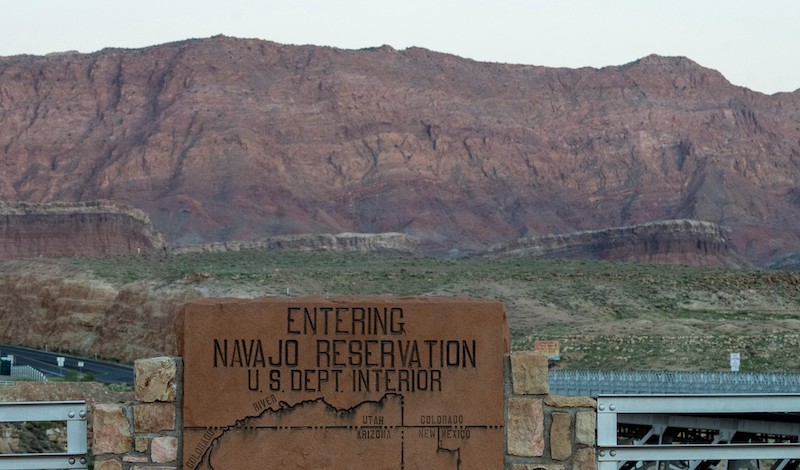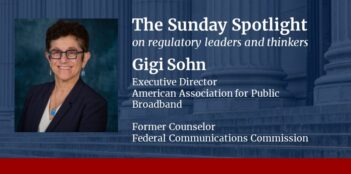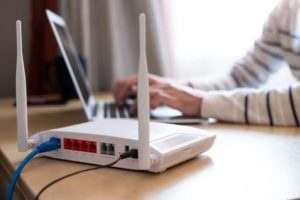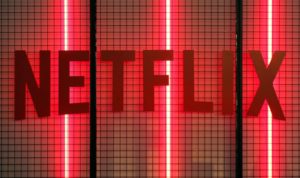
Scholars examine broadband access in tribal lands and the effects of poor internet service on Native American communities.
In recent years, the digital divide—the gap between demographics and regions that have access to information and community technology and those that have no or restricted access—has narrowed among rural Americans. Despite federal subsidies and initiatives such as the Affordable Connectivity Program, however, tribal lands remain some of the least connected and most neglected areas of the country.
According to estimates from the U.S. Census Bureau, high-speed internet is available to just over half of Native Americans owning computers and living on reservations or other tribal land, and 18 percent of the population has no internet access at all. Many individuals resort to accessing the internet through smartphones or by connecting at libraries or the homes of friends when there is no reliable cellphone service nearby.
This lack of consistent access hinders tribal communities from building internal and self-sustaining structures for self-governance, quality education, economic opportunity, and cultural preservation. Furthermore, inadequate connectivity exacerbates existing inequities for resource-strained tribal communities, including disparities in physical and mental health, early childhood development, educational achievement, and exposure to the criminal justice system.
A major obstacle to quality broadband access for Native American communities is a lack of infrastructure. Service providers are often hesitant to build towers or plant fiber-optic cables in low-density population areas, such as tribal lands. Although federal funding is available to encourage service provider investment in Native American communities, the Federal Communication Commission (FCC) and the U.S. Department of Agriculture’s (USDA) Rural Utilities Service have historically allocated few funds to tribes or tribe-owned service providers.
Furthermore, representatives from tribal communities report that the administrative requirements for federal grants can be burdensome and the language included in these applications difficult to understand. Recognizing the complex regulatory environment as a barrier to access, the U.S. Department of the Interior’s Bureau of Indian Affairs recently released the National Tribal Broadband Strategy.
One major challenge in assessing connectivity in tribal lands is the dearth of accurate data. The U.S. Government Accountability Office (GAO) reported that the FCC and service providers often overstate the amount of broadband coverage on tribal lands due to data capturing methods that include tribal lands having the infrastructure for broadband, rather than actual access to broadband. Complicating this issue is a lack of clear guidance from the FCC as to how to assess broadband availability and report it on Form 477, which providers must file with the FCC twice a year.
In this week’s Saturday Seminar, we collect scholarship discussing barriers to inadequate broadband access and solutions tribal communities are employing to improve connectivity.
- In an article published in the University of Pennsylvania Carey Law School Public Law and Legal Theory Research Paper Series, Christopher S. Yoo, Muge Haseki, and Leon Gwaka of the University of Pennsylvania argue that tribal communities’ status as “sovereign dependents” of the federal government makes it difficult for them to procure FCC funds for broadband initiatives. They explain that because the federal government often outsources its funding decisions to state governments and has been generally inattentive to tribal needs, Native American tribes frequently find themselves unable to access these resources. They also note that cultural rules about how infrastructure must be installed on tribal lands can sometimes slow progress. Private companies and public universities have helped tribal communities avoid legislative oversight and targeted exclusion in some instances, Yoo, Haseki, and Gwaka state.
- In a recent paper published by New America, policy analyst Claire Park of the Open Technology Institute analyzes the current state of U.S. broadband and the areas in which it falls short. Park argues that broadband adoption in the United States is inadequate compared to other countries, as the U.S. government fails to deliver proper access, adoption, and quality. She proposes that local governments should introduce community and tribal broadband networks. Park argues that tribal community internet access through privately owned internet service providers is expensive, low-quality, and limited in coverage. On the contrary, she explains, community networks could provide faster, higher quality, and more affordable internet service. She subsequently provides examples of successful municipal networks and notes that the federal government has required municipal governments to conduct environmental surveys and obtain permits from state and federal agencies.
- In an article published in The Journal of Law, Medicine & Ethics, Brittney Crock Bauerly, Russell F. McCord, Rachel Hulkower, and Dawn Pepin explore the role that internet broadband plays in healthcare access for tribal communities. Approximately 1.4 million people living on U.S. tribal lands lack broadband access, the authors observe. They argue that poor broadband not only limits access to telehealth services but also hinders other social determinants of health, such as education and employment. Bauerly, McCord, Hulkower, and Pepin note that federal and state policymakers are taking steps to expand broadband access by funding access projects and financing broadband infrastructure. The authors explain that a number of federal agencies run programs to support telehealth access in particular, such as the FCC Rural Health Care Program and USDA Distance Learning and Telemedicine Program. They also observe that some states have mandated that state officials take steps to support coordination of broadband expansion initiatives.
- According to Brian Howard and Traci Morris of the American Indian Policy Institute at Arizona State University, the data captured by the FCC overstates the availability of broadband internet access on tribal lands. The authors suggest that by misrepresenting the data and failing to capture factors such as the affordability of high-speed internet subscriptions, service quality, and denials of service, the FCC ignores substantial barriers to access. Although regulatory solutions have succeeded to the extent that federal subsidies can persuade service providers to formulate strategic business plans aimed at serving tribal communities, the authors recommend that the FCC establish the Office of Native Affairs and Policy as an independent office with a permanent annual budget. Doing so, they argue, will help the FCC to engage with tribes and create bridges with external agencies, private organizations, and industry.
- In an article published by the Institute for Local Self-Reliance, Trostle of the Federal Reserve Bank of Minneapolis provides recommendations for broadband policy in Native Nations in light of the historical relationship between Native Nations and the federal government. Trostle explains that the United States largely controlled Native Nations’ economic development policy until the U.S. Congress passed the 1975 Indian Self-Determination and Education Assistance Act, which provided Native Nations with the control to receive direct funding and develop their own economic plans. Trostle contends that when the United States dictated Native Nations’ economic policy, the federal government ignored many Native Nations’ cultural values, causing a disconnect between the tribes’ economy and tradition. When considering how to expand internet access in tribal lands, Trostle argues that the federal government must learn from past mistakes and respect tribal sovereignty. According to Trostle, Native Nations have planned for how their communities can work to expand internet access, and Trostle recommends that the federal government and other lending institutions help by providing funding for Native Nations to achieve these goals.
- In an article published in the Journal of Information Policy, Heather E. Hudson of the University of San Francisco and Rob McMahon of the University of Alberta discuss indigenous representation in regulatory agencies and proceedings. Hudson and McMahon argue that indigenous participation in regulatory proceedings is important but often limited due to a lack of finances, time, and expertise. Indigenous communities have emphasized, however, the importance of meaningful consultation when policymakers develop broadband infrastructure plans to understand how tribal lands could be affected, they explain. The authors recommend that the federal government help encourage participation and consultation by providing funding, training workshops, and access to government staff.
The Saturday Seminar is a weekly feature that aims to put into written form the kind of content that would be conveyed in a live seminar involving regulatory experts. Each week, The Regulatory Review publishes a brief overview of a selected regulatory topic and then distills recent research and scholarly writing on that topic.



